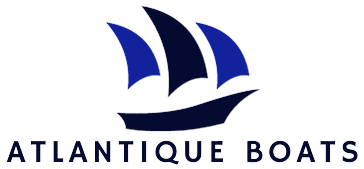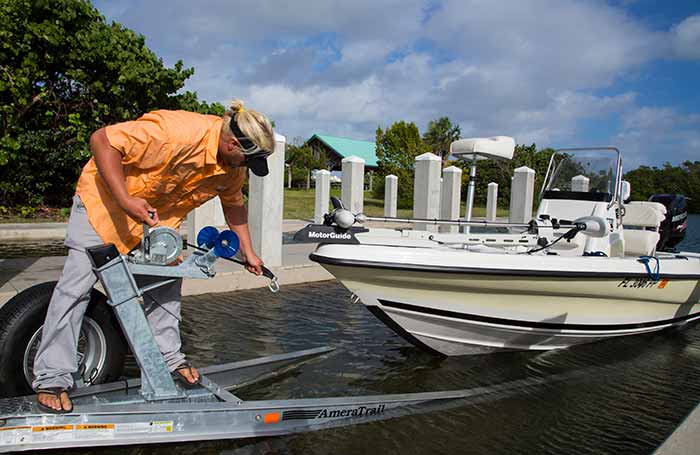Imagine the exhilarating feeling of successfully retrieving your boat onto a trailer after a day of adventure on the water. As you secure your prized possession, you may be tempted to kick back and celebrate the end of a great day. However, before you can fully relax, it’s crucial to ensure you take the necessary steps to properly care for your boat and trailer. So, what is the first thing you should do after retrieving a boat onto a trailer? In this guide, we will explore the essential tasks that will help you maintain your boat’s longevity and ensure a safe journey back home.
As any experienced boater knows, the immediate actions you take after loading your boat onto a trailer can significantly impact its condition and your future boating experiences. From inspecting the boat’s hull for any signs of damage to securing all loose items, there are several crucial steps that demand your attention. By dedicating a few extra minutes to these initial tasks, you can prevent potential issues down the line, save money on repairs, and guarantee a smooth and stress-free boating experience next time you hit the water. So, let’s dive into the must-do actions that should be at the top of your post-retrieval checklist.
After retrieving a boat onto a trailer, the first thing you should do is secure it properly. Make sure the boat is centered on the trailer and the bow eye is securely attached to the winch. Attach the safety chains and fasten the straps or ropes to secure the boat to the trailer. Check that the boat is level and the trailer lights are working before hitting the road.
What is the First Thing You Should Do After Retrieving a Boat onto a Trailer?
After successfully retrieving your boat onto a trailer, it is crucial to follow the correct steps to ensure your boat is properly secured and ready for transport. Taking the necessary precautions will not only protect your boat from damage but also ensure the safety of yourself and others on the road. Here is a step-by-step guide on what you should do after retrieving a boat onto a trailer:
Step 1: Inspect the Boat and Trailer
The first thing you should do is thoroughly inspect both the boat and the trailer. Check for any visible signs of damage, such as cracks, dents, or loose parts. Pay close attention to the trailer’s tires, lights, and hitch. Ensure that the boat is properly seated on the trailer and that all straps and ropes are securely fastened.
If you notice any issues during the inspection, address them immediately before hitting the road. Repair or replace any damaged parts to guarantee the safety and stability of your boat during transit.
Step 2: Secure the Boat and Trailer
Once you have completed the inspection and confirmed that everything is in good working order, it’s time to secure the boat and trailer. Begin by double-checking that the boat is centered on the trailer and properly aligned. This will help distribute the weight evenly and ensure a smooth and stable ride.
Next, secure the boat to the trailer using high-quality straps or ropes. Make sure to tighten them securely, but be cautious not to overtighten, as this could damage the boat or trailer. It is recommended to use multiple straps or ropes to provide extra stability and redundancy.
Additionally, attach safety chains or cables between the trailer and the towing vehicle. These chains act as a backup in case the main hitch fails, preventing the trailer from detaching completely. Cross the chains under the hitch, ensuring they are short enough to prevent the trailer from hitting the ground if it becomes disconnected.
Finally, check that all lights on the trailer are working correctly. This includes the brake lights, turn signals, and tail lights. Ensuring proper lighting is essential for the safety of yourself and other drivers on the road.
Step 3: Perform a Test Drive
Before embarking on a long journey with your boat, it is advisable to perform a short test drive to ensure everything is secure and functioning as expected. Start by driving at a slow speed in a controlled environment, such as an empty parking lot, and gradually increase your speed.
Pay attention to how the boat and trailer handle during turns, braking, and acceleration. If you notice any unusual behavior, such as swaying or fishtailing, you may need to adjust the boat’s positioning or tighten the straps further. Make any necessary adjustments before setting off on your trip.
Remember to always follow local traffic laws and regulations when towing a boat. Keep a safe distance from other vehicles and be extra cautious during turns and lane changes. Properly securing your boat and trailer will help ensure a trouble-free and enjoyable journey to your destination.
Frequently Asked Questions
Here are some commonly asked questions about what to do after retrieving a boat onto a trailer.
Question 1: What is the first thing you should do after retrieving a boat onto a trailer?
After retrieving a boat onto a trailer, the first thing you should do is ensure that the boat is securely fastened to the trailer. This can be done by using straps or ropes to tie down the boat to the trailer. It is important to make sure that the boat is tightly secured to prevent any movement during transportation.
Additionally, you should also check the boat’s positioning on the trailer. Make sure that the boat is centered and balanced on the trailer to ensure safe and stable transportation. This can be done by adjusting the boat’s placement on the trailer or using additional supports if necessary.
Question 2: Why is it important to secure the boat to the trailer?
Securing the boat to the trailer is crucial for safe transportation. If the boat is not properly secured, it can shift or move during transit, leading to potential damage to the boat, the trailer, or other vehicles on the road. Loose boats can also pose a safety hazard to other drivers, as they may become unstable or fall off the trailer.
By securely fastening the boat to the trailer, you can minimize the risk of accidents, ensure the boat remains in place, and protect it from unnecessary wear and tear. Taking the time to properly secure the boat will give you peace of mind and help maintain the longevity of your boat and trailer.
Question 3: How should I tie down my boat to the trailer?
There are several methods you can use to tie down your boat to the trailer. One common method is to use ratchet straps or heavy-duty ropes. Start by attaching the straps or ropes to secure points on the boat, such as the cleats or eyelets. Then, stretch the straps or ropes over the boat and attach them to anchor points on the trailer, such as D-rings or tie-down hooks.
Make sure the straps or ropes are tightened securely, but be cautious not to over-tighten and put excessive pressure on the boat. It is also a good idea to cross the straps or ropes to create a crisscross pattern, which helps distribute the tension evenly. Always double-check that the boat is tightly fastened before hitting the road.
Question 4: How can I ensure the boat is centered and balanced on the trailer?
To ensure the boat is centered and balanced on the trailer, start by aligning the boat’s keel with the centerline of the trailer. Use a trailer guide or visual reference to help with the alignment. Once the boat is centered, make sure it is positioned evenly on the trailer’s bunks or pads.
If the boat seems unbalanced, you can make adjustments by shifting its position on the trailer or using additional supports such as wedges or blocks. It is important to distribute the boat’s weight evenly across the trailer to avoid excessive strain on one side. A well-balanced boat on the trailer will enhance stability and ease of towing.
Question 5: Are there any additional safety precautions I should take after retrieving a boat onto a trailer?
Yes, there are a few additional safety precautions to keep in mind after retrieving a boat onto a trailer. Before hitting the road, check that all lights and signals on the trailer are functioning properly. This includes brake lights, turn signals, and reflectors. Ensuring proper visibility to other drivers is essential for safe towing.
It is also a good practice to double-check the hitch connection between the trailer and the towing vehicle. Make sure the hitch is securely locked and that the safety chains are properly attached. Regularly inspect the trailer tires for proper inflation and any signs of damage or wear. Finally, be mindful of the weight limit of your trailer and ensure that it is not exceeded to avoid overloading and compromising safety.
In conclusion, knowing the first thing to do after retrieving a boat onto a trailer is crucial for any boat owner or enthusiast. By following this simple yet essential step, you can ensure the safety of your boat and the smoothness of your journey. Remember, after securing the boat onto the trailer, the first thing you should do is properly fasten the boat to the trailer using robust straps or chains. This not only prevents any potential accidents or damage while on the road but also ensures that your boat remains securely in place during transportation. Additionally, double-checking the tightness of these fastenings can give you peace of mind, allowing you to focus on enjoying your time on the water.
Furthermore, after securing the boat to the trailer, it is recommended to inspect the trailer itself for any potential issues or concerns. Check that the trailer’s tires are properly inflated and in good condition, as this is crucial for maintaining stability and control while towing. Additionally, ensure that all the trailer lights are functioning correctly, including brake lights, turn signals, and taillights. This helps to ensure visibility and safety on the road, not only for yourself but also for other drivers. By taking these steps as the first thing after retrieving a boat onto a trailer, you are setting yourself up for a successful and worry-free boating experience. Remember, safety should always be a top priority when it comes to transporting your beloved boat.



















